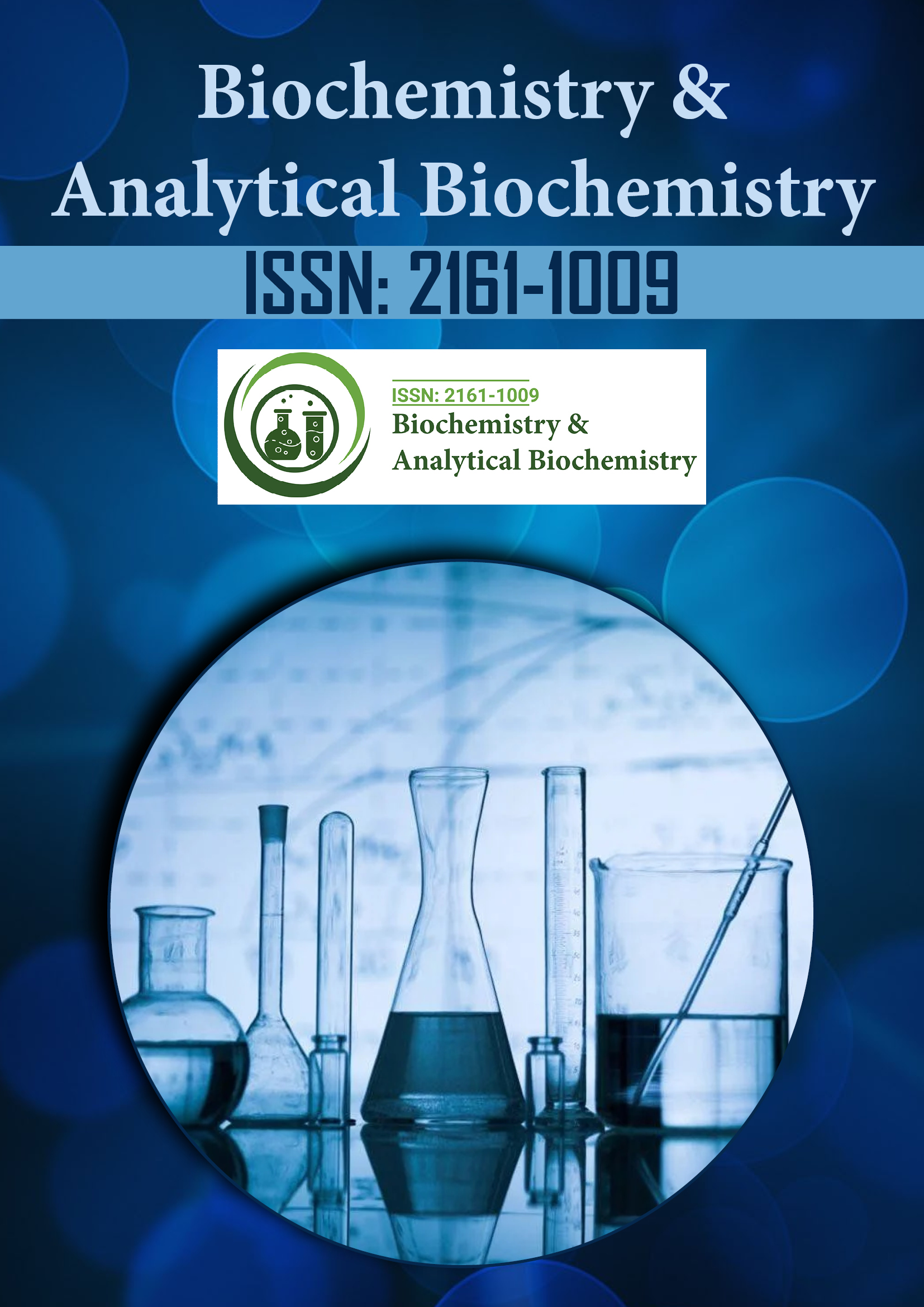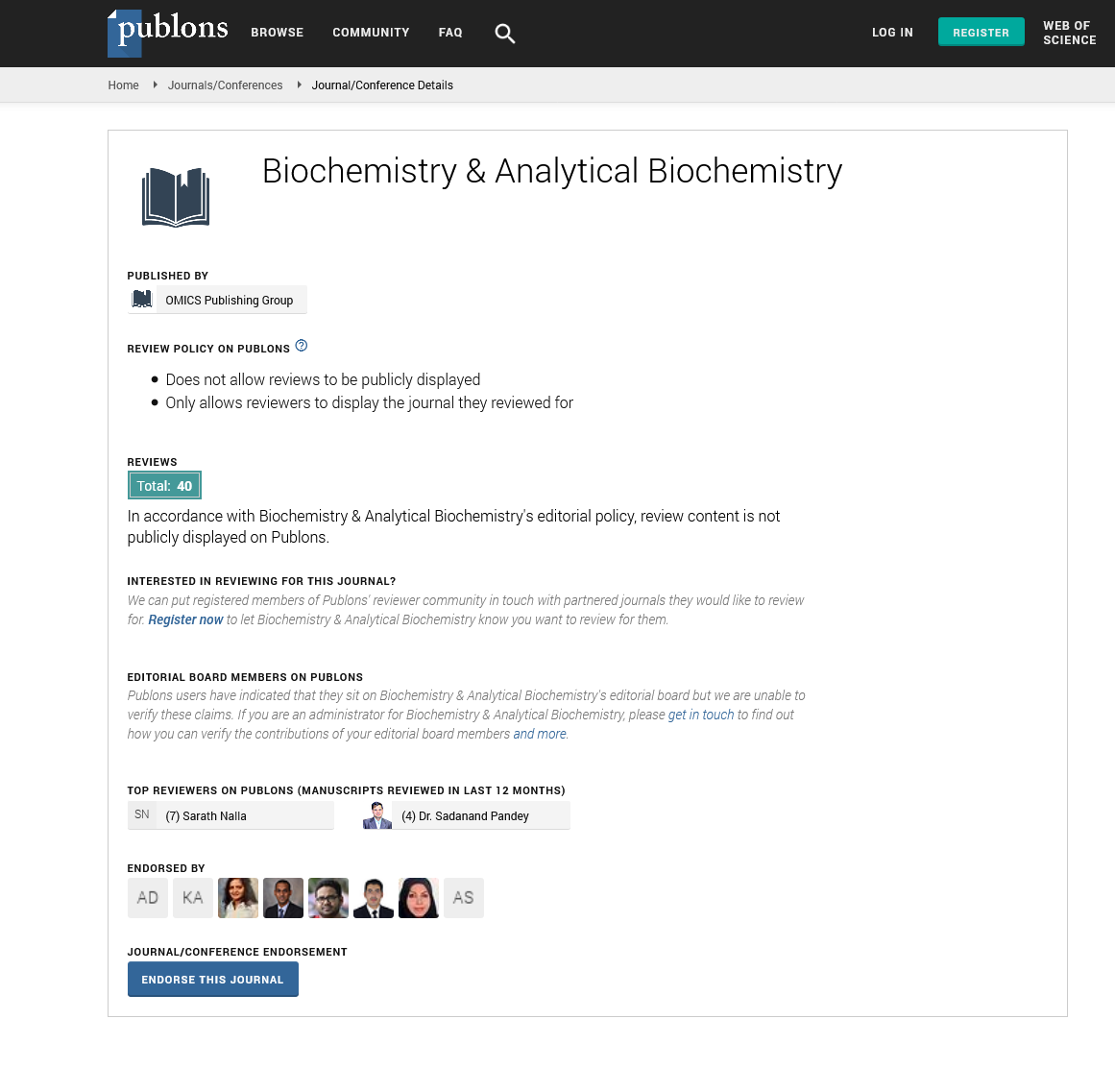Indexed In
- Open J Gate
- Genamics JournalSeek
- ResearchBible
- RefSeek
- Directory of Research Journal Indexing (DRJI)
- Hamdard University
- EBSCO A-Z
- OCLC- WorldCat
- Scholarsteer
- Publons
- MIAR
- Euro Pub
- Google Scholar
Useful Links
Share This Page
Journal Flyer

Open Access Journals
- Agri and Aquaculture
- Biochemistry
- Bioinformatics & Systems Biology
- Business & Management
- Chemistry
- Clinical Sciences
- Engineering
- Food & Nutrition
- General Science
- Genetics & Molecular Biology
- Immunology & Microbiology
- Medical Sciences
- Neuroscience & Psychology
- Nursing & Health Care
- Pharmaceutical Sciences
Commentary - (2024) Volume 13, Issue 4
Biochemical Pathways in Cellular Signaling: Analytical Tools for Understanding Molecular Mechanisms
Maria Lopez*Received: 27-Nov-2024, Manuscript No. BABCR-24-28127; Editor assigned: 29-Nov-2024, Pre QC No. BABCR-24-28127 (PQ); Reviewed: 13-Dec-2024, QC No. BABCR-24-28127; Revised: 20-Dec-2024, Manuscript No. BABCR-24-28127 (R); Published: 27-Dec-2024, DOI: 10.35248/2161-1009.24.13.560
Description
Biochemical pathways in cellular signaling play a fundamental role in regulating cellular processes, including growth, differentiation, metabolism, and immune response. These pathways are essential for maintaining cellular homeostasis, and any disruptions in their regulation can lead to a variety of diseases, such as cancer, diabetes, and neurodegenerative disorders. Understanding the molecular mechanisms of these signaling pathways is critical for developing targeted therapies and diagnostic tools. Analytical tools have become increasingly sophisticated in enabling the study of these complex biochemical networks, offering insights into how signaling molecules interact and regulate cellular functions.
One of the most important aspects of cellular signaling is the ability to detect and quantify small molecules, such as hormones, neurotransmitters, and cytokines, which are key for initiating and modulating signaling pathways. Analytical techniques like Mass Spectrometry (MS) have become indispensable for studying these molecules. MS provides high sensitivity and precision for detecting low-abundance signaling molecules in biological samples, allowing for the identification of key metabolites and intermediates involved in signaling. Advanced techniques such as Liquid Chromatography-Mass Spectrometry (LC-MS) enable researchers to separate complex mixtures of biomolecules and perform quantitative analyses, revealing how signaling molecules fluctuate in response to cellular stimuli or external factors.
The role of proteins in cellular signaling is also central to understanding these pathways. Protein kinases, phosphatases, and other enzymes regulate the activation and inactivation of signaling proteins through post-translational modifications, such as phosphorylation, acetylation, and ubiquitination. Analytical techniques like Western blotting and Enzyme-Linked Immunosorbent Assay (ELISA) are widely used to study these modifications, providing insights into the activity of key signaling proteins. For instance, the phosphorylation status of specific proteins can be used as a marker for pathway activation, and changes in enzyme activity can be linked to disease progression. These techniques enable researchers to study the dynamic regulation of signaling pathways in response to different stimuli or treatments.
Another important tool for studying biochemical pathways in cellular signaling is fluorescence microscopy, which allows for the visualization of cellular processes in real-time. By using fluorescent probes or genetically engineered fluorescent proteins, researchers can track the movement of signaling molecules within living cells and observe changes in cellular localization and interactions. This approach is particularly useful for studying signal transduction pathways, where molecules like second messengers rapidly move through the cytoplasm to activate downstream effectors. Fluorescence Resonance Energy Transfer (FRET) is a technique that enables the detection of proteinprotein interactions, allowing for the visualization of signaling complexes as they form in response to cellular stimuli.
In addition to these methods, Next-Generation Sequencing (NGS) and transcriptomics provide valuable insights into how gene expression is regulated by signaling pathways. NGS technologies allow for the profiling of entire transcriptomes, enabling the identification of genes that are upregulated or downregulated in response to specific signaling events. By combining NGS with other analytical techniques, such as ChIPsequencing (chromatin immunoprecipitation), researchers can uncover the transcription factors and epigenetic modifications involved in signaling pathway regulation. This approach provides a comprehensive view of the gene networks that are activated or repressed as a result of signaling, and can help identify potential therapeutic targets for diseases driven by abnormal signaling.
Proteomics is another analytical approach that has proven essential for studying cellular signaling. Proteomic techniques, such as Two-Dimensional Gel Electrophoresis (2D-GE) and shotgun proteomics, allow for the large-scale analysis of protein expression and modifications within signaling pathways. These methods provide information on the abundance and functional state of signaling proteins, as well as their interactions with other molecules. With advances in mass spectrometry, it is now possible to identify and characterize the entire proteome of a cell, providing a comprehensive map of the proteins involved in signaling and how they are regulated in response to cellular cues.
Moreover, quantitative proteomics enables the study of signaling pathway dynamics over time, allowing researchers to track changes in protein abundance and modifications in response to stimuli or therapeutic interventions.
Citation: Lopez M (2024). Biochemical Pathways in Cellular Signaling: Analytical Tools for Understanding Molecular Mechanisms. Biochem Anal Biochem. 13:560.
Copyright: © 2024 Lopez M. This is an open access article distributed under the terms of the Creative Commons Attribution License, which permits unrestricted use, distribution, and reproduction in any medium, provided the original author and source are credited.

